Allen VK3HRA had organised a Show and Tell day to compare SOTA equipment near Rubicon. I was keen to see some of the CW paddles that both Allen and Warren VK3KS were using for SOTA CW activations. We spent the morning near the camp ground at Rubicon comparing toys. Lots of interesting gear and a good chance to try out the Palm mini and Palm pico paddles. It was also interesting to compare the HB1B, MTR, MTR2 and ATS4 CW rigs.
I also picked up ideas on attaching guy cords to antenna wires and rigging antenna wires to squid poles which I’ve implemented in the latest versions of my EFHW antenna.
Bill Head – VK3/VN-004
Just before lunch Andrew VK3JBL and Warren VK3KS headed off to summits and Allen and I headed to Bill Head (VK3/VN-004). We accessed Bill Head from the southern approach on Conn Gap Rd. Whilst you could probably get up this in a 2WD, definately better in a 4WD. Allen had been here previously and recalled many blackberries on the edges of the road making it fairly hard to find a path up the actual summit. We continued along the road until we weren’t far from the ridge line, parked and headed up to the top of the ridge. This involved climbing over quite a few fallen trees – looks like there has been selective logging in the past – which was quite hard going. Once on the ridge line, the terrain opened out and it was a fairly easy walking up to the summit.
The summit of Bill Head is an open woodland with mountain ash and an essentially grassy under story with numerous granite outcrops. It’s a very comfortable summit to operate from as seen in this photo:
For this operation, I’d planned to use my 1500 mAH LiPo batteries which are very light, but sufficient for a SSB activation or two. Only problem was that they have XC60 connectors on them (the way they come from Hobby King) and I left my XC60 – Power Pole adapter in the car! I’d brought my MTR radio just in case I got motivated to have a shot at CW and it has a 500 mAh LiPo battery with Power Pole connectors. I figured that at least it would last the minimum 4 QSOs required to activate the summit. I set up some 10m away from Allen with our antennas at right angles to try and minimise the interference.
We both started activating at the same time and quickly realised that we were interfering with each other heavily. Next time we need to be further apart and on separate bands. Allen did his 4 QSOs on CW to activate and then packed up due to the level of interference. I kept going to work the SSB pileup and see how far I got with the meagre battery supply into my 20W KN-Q7A.
The low battery alarm went off just as I started working my 27th and last contact! Here’s a photo of the battery with it’s remaining charge when I got home:
This makes me think that for the 5-10W class rigs, a pair of 1000 mAh LiPos would probably be plenty for the average day of activations.
This activation was also the first outing for my trapped EFHW antenna. It rigged fine and seemed to work very well. I only tried it on 40m as my KN-Q7A is monoband.
The tally for this activation was 27 40m SSB QSOs including 4 S2S and one 2m FM contact with Andrew VK3JBL on Mt Torbreck. The highlights were managing S2S contact with Andrew VK3JBL on Mt Torbreck, Warren VK3KS on Proctor and also Peter VK3YE was just discernible (report 41) running 1 watt in Melbourne from a new home built rig.
The walk back to the car was directly down the side of the hill back to the road and then a walk up the road to the car. It was about the same time, but easier walking with no fallen timber, but we had to push through some fairly dense undergrowth at times. Here’s the GPS track together with the stats and profile for reference:
Here’s Allen’s blog of the same trip. Another interesting activation! From here we managed a 20 point turn on the track and headed to Pyramid Hill.
Pyramid Hill VK3/VN-005
We drove as far as we could up No 5 Track to the junction of Royston Range track which was still closed due to seasonal closure. From here we hiked up the Royston Range track to the summit – it was quite an easy 20 min walk each way.
This time Allen just came for the walk as he’s already activated this summit this year. This activation was the first test of my magnetic loop antenna. I was expecting to receive overall lower signal reports with this antenna due to the relative inefficiency compared to a wire dipole/EFHW. I was pleasantly surprised with the same sort of signal reports as I’d received earlier in the day on the EFHW. The antenna is a little heavier than the EFHW, but doesn’t require a squid pole to support it and so overall there’s not a lot of weight difference. This may turn out to be an excellent choice for those summits with limited space for antennas or lots of foot traffic.
This summit has been logged recently, but still has decent views to the west:
On this activation, I’d remembered to bring my XC-60 – Power Pole adapter, so had plenty of power from my 1500 mAh LiPo battery. I had also brought up both a power/SWR meter and antenna analyser to help with tuning the loop as I wasn’t sure how it was going to perform in practise.
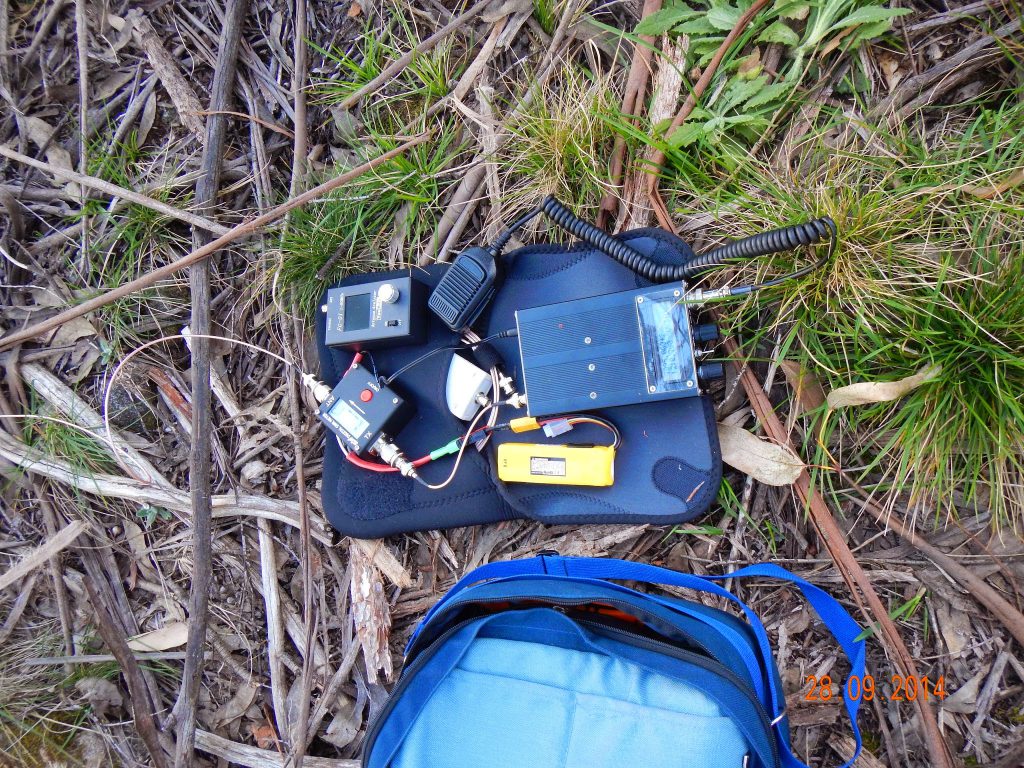
The operating position at Pyramid Hill with my KN-Q7A, Red Dot power/SWR meter and YouKits FB-01 Antenna analyser. Battery is a 1500mAh LiPo (photo credit: Allen VK3HRA)
This activation netted 14 contacts and no S2S which was not surprising given the lateness in the day. We headed back down the track and were out of the forest tracks just as the sun was setting on a great day of Show & Tell and SOTA activations. Thanks Allen again for the company.

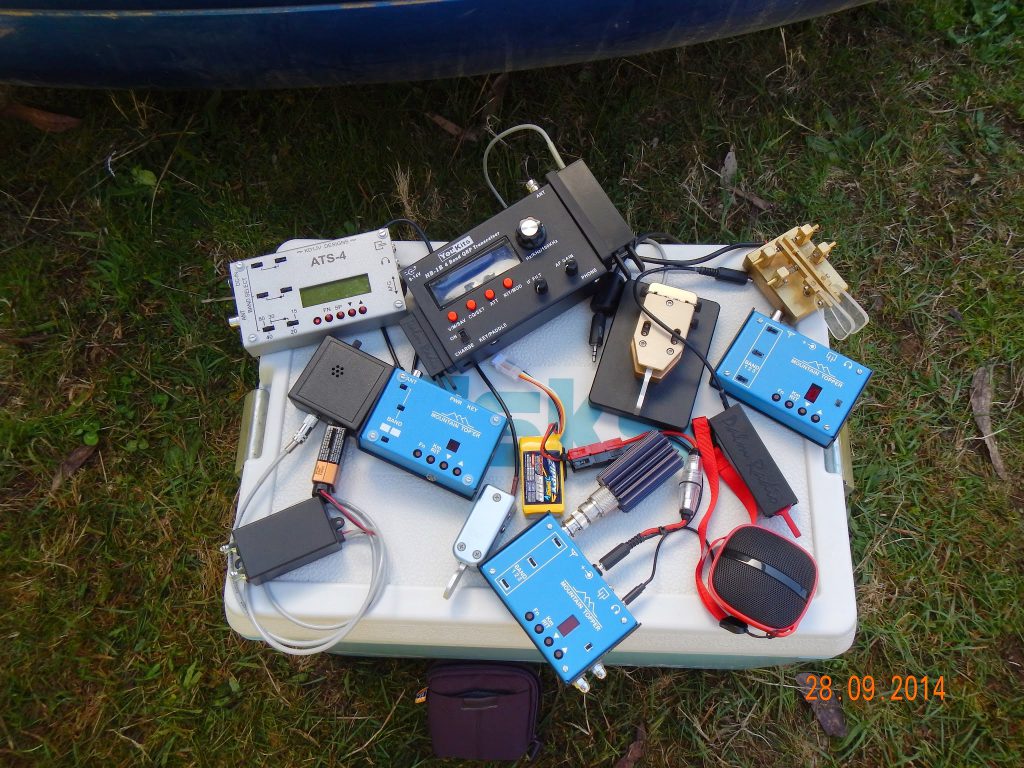
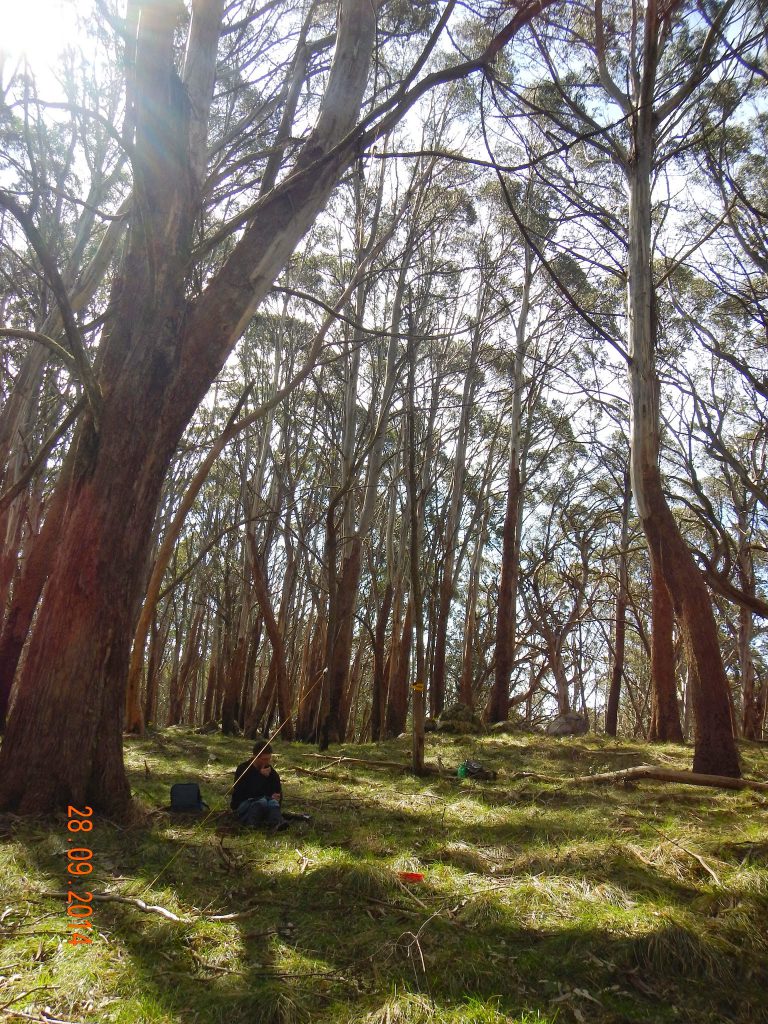
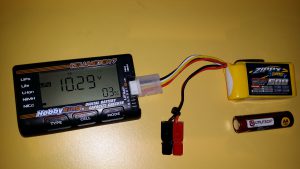
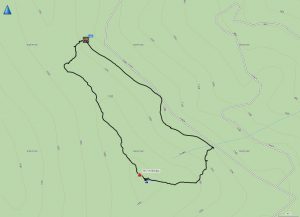


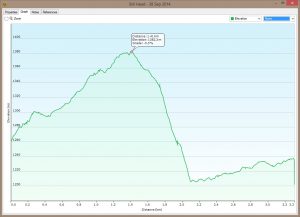


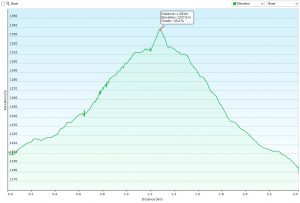
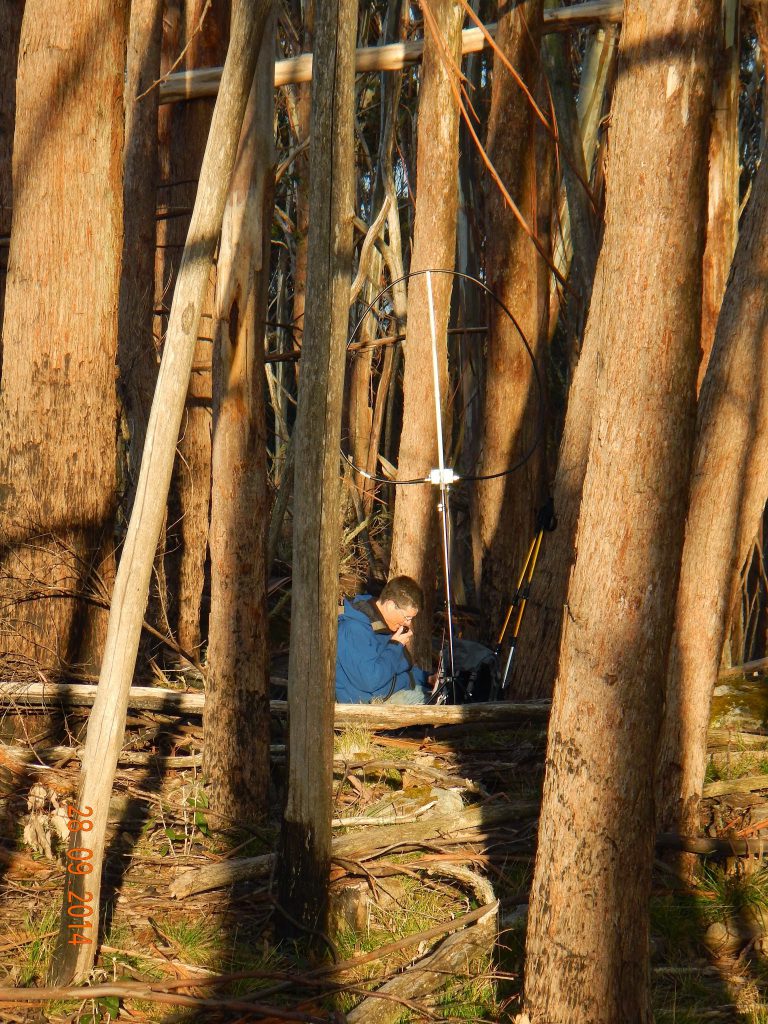
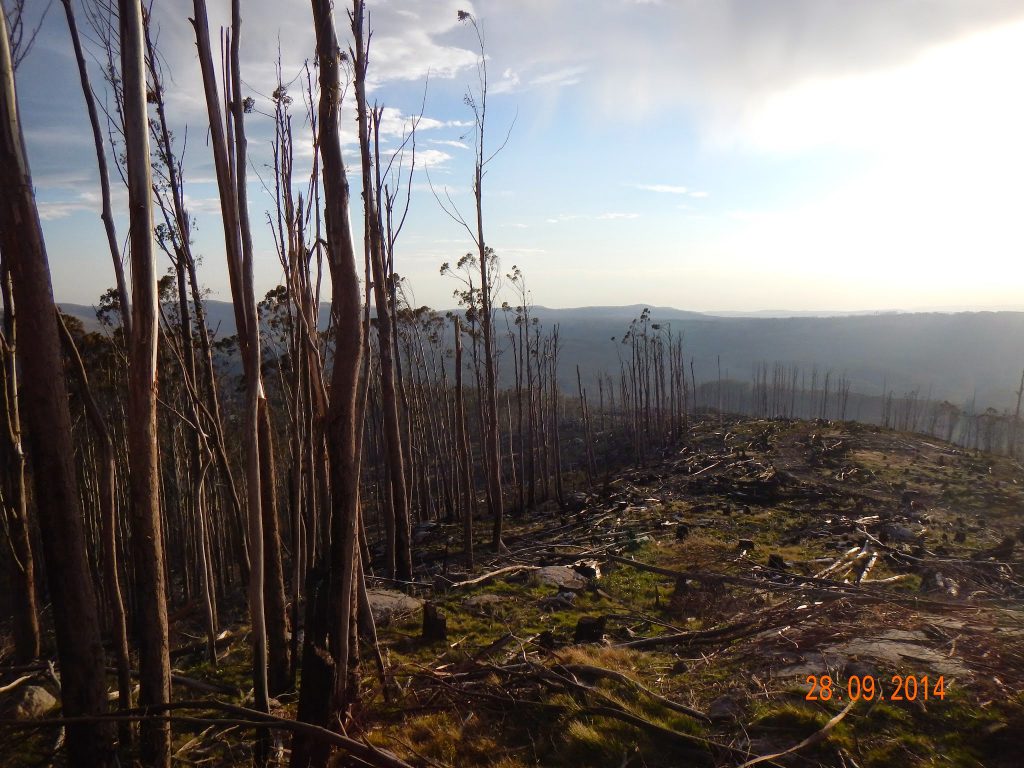
Hi David,
Great report, I haven’t been to Bill Head, must have a shot at the summit when I next visit family in Melbourne. Thanks for sharing your experience on the summits.
73, Andrew VK1NAM